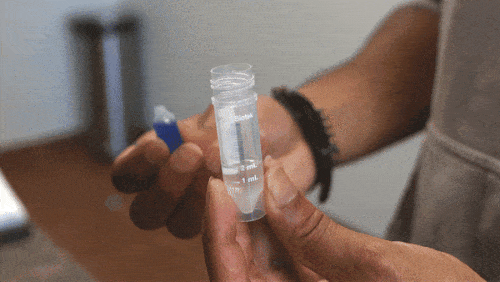RNA extraction
5 Reasons to Choose Silicon Carbide (SiC) Based RNA Extraction Technology
Explore the world of RNA extraction! Here are 5 reasons why Norgen’s Saliva/Swab RNA Purification Kit (Cat. 69100), utilizing Silicon-Carbide (SiC) based technology, is superior to traditional silica-based RNA extraction methods. Silicon Carbide is Norgen Biotek’s proprietary technology, proven to drastically improve RNA yield and quality compared to the CDC’s recommended magnetic-bead silica-based isolation method.
If you’re working with sensitive samples or simply looking to improve your RNA extraction workflow, request a sample to try Norgen Biotek’s SiC technology!
1. Broad spectrum RNA binding
Traditional silica-based technology exhibits a bias towards capturing RNA with high GC content, and RNA fragments with a high molecular weight. Silicon-carbide technology, however, has demonstrated a uniform binding affinity for all RNA species (including small RNAs; 200 nt or smaller). This offers researchers and clinicians a more complete picture of the sample’s true RNA profile thus avoiding any false-negative results that could be caused due to the bias exhibited by the silica-based technology.
2. High Sensitivity
The sensitivity of most commercially available diagnostic viral qRT-PCR detection kits are highly affected by the RNA quality that is used for viral detection. Norgen’s SiC technology yields viral RNA with the highest quality enabling the detection of as low as 400 copies/mL of saliva (i,e, 10 viral copies/PCR reaction). This is ideal for the detection of ultra low viral loads particularly in asymptomatic and recovering patient samples.
The fact that SiC technology doesn’t exhibit any bias towards RNA sizes/sequences is advantageous considering the finding that nucleic acids stored in viral transport media (VTM) can degrade over time. This generates fragmented viral RNA that will be efficiently captured using Norgen’s SiC technology. On the contrary, silica-based technology won’t be able to efficiently capture such fragmented viral RNA causing false-negative results. The use of SiC technology ensures the accurate detection of SARS-CoV-2 regardless of time-dependent viral RNA degradation.





3. Carrier RNA-free extraction
To enhance the RNA binding efficiency of silica-based technology for capturing ultra low RNA input poly(A) carrier RNA is commonly used in commercially available viral RNA extraction kits. The presence of carrier RNA in the eluate can severely impact sensitive downstream applications like RNAseq by significantly reducing the sequencing efficiency of target sequences. Due to the high sensitivity of Norgen’s SiC technology of capturing ultra low RNA inputs RNA carrier is not required, thus enhancing the sequencing efficiency of target sequences.
4. Phenol/chloroform-free extraction
The use of hazardous chemicals for extracting nucleic acids, such as phenol/chloroform, can be laborious and are not amenable to high-throughput processing.
Moreover, the quality of the RNA extracted using phenol/chloroform may not be high enough for sensitive down-stream applications. Norgen’s Sic technology does not utilize phenol/chloroform or any hazardous organic chemicals, and hence the quality of the extracted RNA will be optimum for any sensitive downstream application.
5. Virus inactivating buffers
The use of universal transport media (UTM) and VTM is a common practice in disease screening programs. However, samples stored in these media leave medical laboratory technicians potentially exposed to infectious samples.
RNA extractions that include lytic buffers like Norgen’s Lysis Buffer A and Buffer RL are ideal for sampling methods that utilize UTMs and VTMs as they render the UTM/VTM samples non-infectious.


